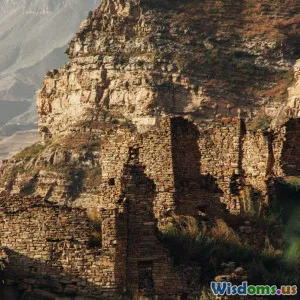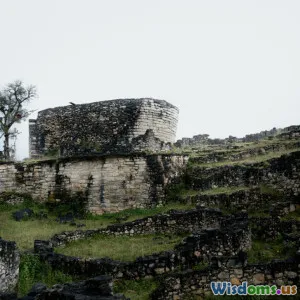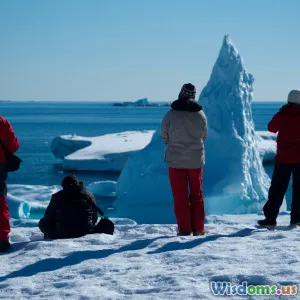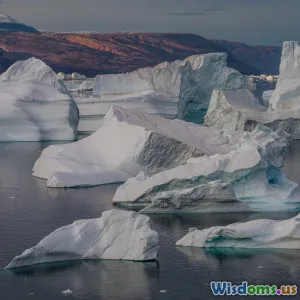
Surprising Dangers When Exploring Remote Historical Sites
9 min read Unveil unexpected hazards lurking in remote historical sites and learn how to explore safely with practical tips and real-world examples. (0 Reviews)
Surprising Dangers When Exploring Remote Historical Sites
Exploring remote historical sites can be like stepping into a time capsule — with breathtaking ruins, untouched artifacts, and stories etched into centuries-old walls. These expeditions often promise unique insights and unforgettable encounters far removed from busier tourist spots. Yet, beneath the romanticism of these adventures lie a series of surprising dangers that often go unnoticed until it’s too late.
Whether you’re trekking through dense jungles to discover lost civilizations, climbing ancient temples, or delving into forgotten villages, understanding the hidden risks can mean the difference between awe-inspiring memories and unfortunate incidents. In this article, we delve deep into the lesser-known dangers involved in exploring remote historical sites, backed by real-world examples, expert insights, and practical safety advice.
Physical and Structural Risks
Decaying and Unstable Structures
Many ancient sites have weathered centuries without comprehensive restoration. Though beautiful, aging walls, stone steps, and bridges can collapse suddenly. For instance, a portion of the ancient city of Pompeii remains closed due to structural instability; in 2010, a wall collapse injured visitors, heightening concerns about the vulnerability of similar ruins worldwide.
One notable example is Angkor Wat in Cambodia, where constant exposure to heavy monsoon rains has degraded wooden supports and sandstone foundations. Tourists unaware of these vulnerabilities risk injury from crumbling stones or hidden voids beneath uneven surfaces.
Challenging Terrain and Accessibility
Many historical sites are located in rugged terrains—dense forests, mountains, or deserts—that pose their own dangers. The Incan ruins of Machu Picchu, perched high in the Peruvian Andes, require hikers to navigate steep, narrow trails where altitude sickness can exacerbate fatigue and reduce alertness.
Similarly, the rock-hewn churches of Lalibela in Ethiopia stand isolated, surrounded by precipitous cliffs and paths prone to rockslides, requiring visitors to maintain extreme caution.
Health Risks in Remote Locations
Exploring away from civilization often means limited access to medical facilities. Infections from minor cuts, dehydration, or heat stroke can escalate quickly in isolated settings. Take the example of explorers visiting Göbekli Tepe in Turkey—remote with little infrastructure—who must carry comprehensive medical kits and rely on group preparedness.
Environmental and Wildlife Hazards
Unexpected Wildlife Encounters
Remote historical sites frequently overlap with natural habitats. In Africa’s Ruhengeri region, near the mountain gorilla refuges, tourists visiting the ancient volcanic sites can unexpectedly encounter dangerous wildlife like snakes, hippos, or buffalos.
Similarly, enthusiasts exploring Native American petroglyphs in the southwestern US deserts should be cautious of venomous rattlesnakes and scorpions that camouflage amongst rocks.
Exposure to Extreme Weather
Many sites lie in extreme climates—scorching deserts like Egypt's Valley of the Kings or rain-soaked tropical jungles like those harboring the lost city of Palenque in Mexico. Sudden weather changes, flash floods, or heatwaves can incapacitate unwary explorers. A tragic example occurred near Petra, Jordan, where flash floods have caught visitors off guard, emphasizing the importance of monitoring weather reports and planning visits accordingly.
Legal and Cultural Considerations
Navigating Local Laws and Restrictions
Not all remote sites are open for casual access. Many governments and indigenous communities regulate entry to protect cultural heritage. Ignorance can lead to fines or prosecution. In Australia, unauthorized visits to Aboriginal sacred sites can offend communities and trigger legal consequences, reflecting a broader need for cultural sensitivity.
Local permits are often required for excavation or photographing certain relics. The 2018 arrest of tourists at Bolivia’s Tiwanaku site for removing artifacts underscores the need to understand and abide by archaeological preservation laws.
Respect for Indigenous Cultures
Historical sites often hold spiritual significance for native peoples. In New Zealand, for instance, the Māori regard certain ancient pa (fortified villages) sites as tapu (sacred). Visitors unaware of these cultural sensitivities can inadvertently disrupt ceremonies or violate taboos.
Engaging with local guides and communities not only fosters respect but provides enriched experiences that deepen appreciation and reduce risks stemming from misunderstandings.
Psychological and Mental Challenges
Isolation and Communication Barriers
Remote exploration means limited or no mobile reception, making emergencies harder to manage. The psychological strain of isolation, compounded by challenging conditions, can lead to disorientation or poor decision-making.
In 2017, a group of archaeologists studying the ancient Maya city of Calakmul found themselves stranded due to heavy rains washing out trails—no external communication was possible for two days. Such incidents highlight the necessity of contingency planning and carrying satellite communication devices.
Decision Making Under Stress
The thrill of discovery may overshadow the mental readiness required to face unexpected issues. Anxiety, panic, or overconfidence can impair judgment, increasing the potential for accidents. Mental health considerations should be part of expedition planning, particularly for solo travelers.
Safety Recommendations for Adventurous Explorers
Prior Research and Local Collaboration
Thoroughly study the site’s history, climate, political context, and access restrictions. Collaborate with local guides and authorities who know hidden hazards and help navigate cultural protocols.
Equip Properly
Bring appropriate gear: sturdy boots, weather-resistant clothing, first-aid kits, GPS devices, and satellite phones. For sites at risk of wildlife encounters, consider carrying deterrents recommended by wildlife experts.
Physical Preparation
Build fitness and acclimatize to altitude when necessary. Understand your limits to avoid exhaustion or injury.
Stay Informed and Flexible
Monitor weather reports, political developments, and local advisories. Always have a plan B in case routes become inaccessible or conditions worsen.
Legal Awareness and Respectful Behavior
Obtain all necessary permits, avoid removing artifacts or disturbing the site, and engage respectfully with local cultures.
Conclusion
Remote historical sites hold irresistible allure—portals to vanished civilizations and architectures that defy time. But as with many great treasures, the path is fraught with unseen dangers, from falling masonry and wild animals to cultural conflicts and psychological strain.
By understanding these risks and taking deliberate precautions, explorers can safely embrace the adventure while honoring and preserving humanity's collective heritage. Whether you're an academic researcher, individual adventurer, or casual traveler, vigilance and respect will ensure your experience transcends mere sightseeing to become a deeply transformative journey.
Remember: every stone has a story, every ruin a legacy—but your safety ensures those stories endure for generations to come.
Rate the Post
User Reviews
Other posts in Historical Exploration
Popular Posts















